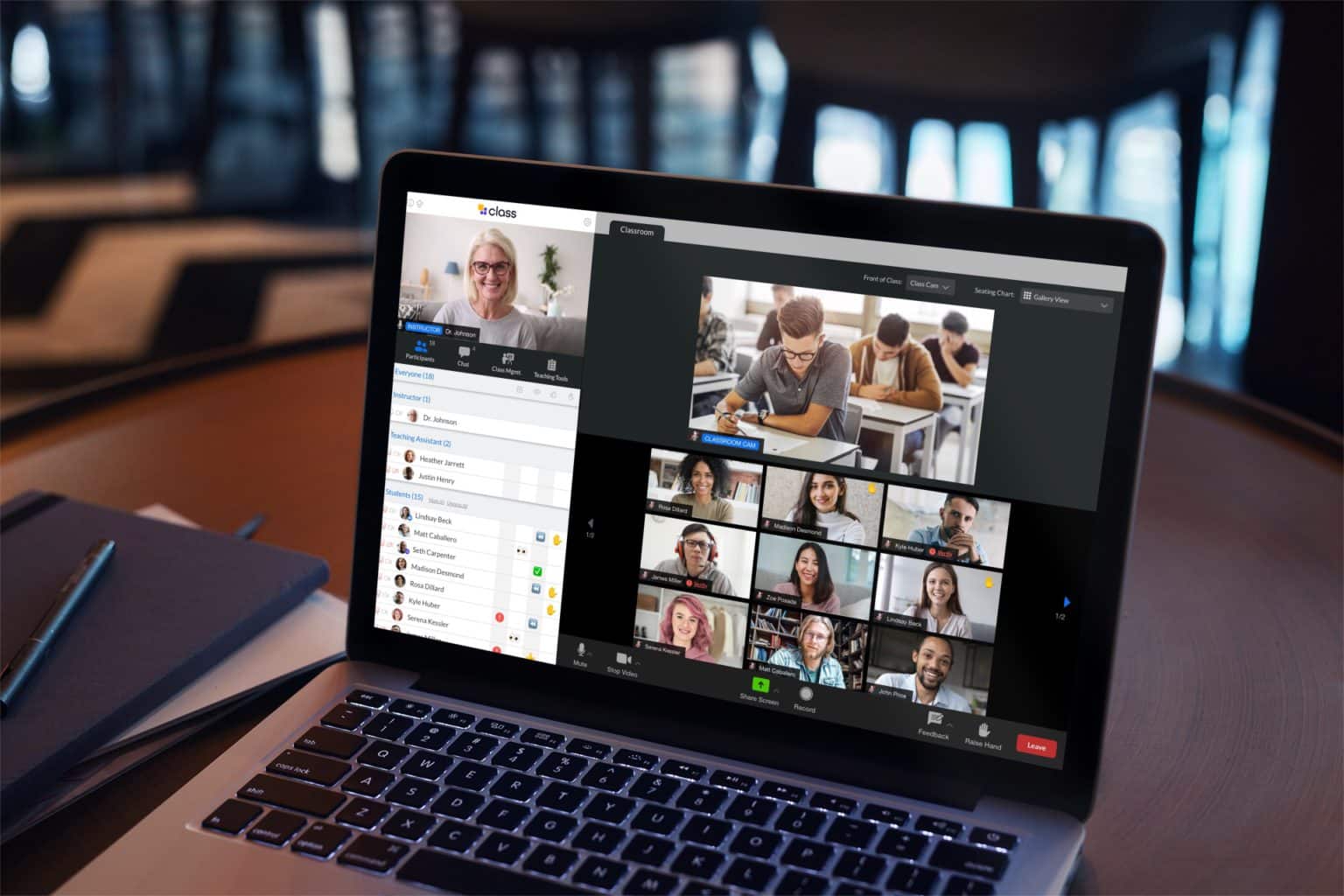
Class is the next generation virtual classroom for K-12, higher education, government agencies, and the workplace. Contact us today to schedule your live demo and see Class in action.

Class is the next generation virtual classroom for K-12, higher education, government agencies, and the workplace. Contact us today to schedule your live demo and see Class in action.

Even as virus concerns begin diminishing in some areas, Zoom continues to be a go-to tool for instructors and students to connect in new ways. Some classes are fully remote, and some are hybrid. Regardless of the format, instructors have learned a lot over the past several months about college student engagement strategies for online learning.
Dr. Allison Weidhaas, an associate professor and Director of MA programs—Business Comm & Health Comm at Rider University, is a case in point. She recently finished another semester teaching a college-level capstone course in PR cases and campaigns entirely in Zoom. The class requires PR students to work with external clients to develop communication plans. This semester, the class worked with five different clients, in both for-profit and nonprofit entities. During class time, students worked on structured assignments to develop a communication plan, receiving continuous feedback along the way.
“We used Zoom for brainstorming ideas, meeting in small groups, and we had about eight guest speakers throughout the semester to inspire new ideas and provide networking opportunities,” says Weidhaas. “Zoom allowed us to host a lot of guests that couldn’t otherwise visit our class because of both time and location restrictions,” she says. It provided an opportunity, she says, “to open our classroom doors to our larger community, both with client visits and guest speakers.” In fact, she says, “instead of reducing interaction, our Zoom classroom changed the way we interact.”
What does not work in the Zoom classroom environment, says Weidhaas, is the traditional lecture. If she needs to share information without a lot of interaction, she’ll record those sessions for students to view on their own time.
Janet Ferone, a lecturer at Lesley University and Curry College as well as the owner of Ferone Educational Consulting takes the same approach. “I like to use Zoom time for feedback and questions and use asynchronous tasks for weekly content,” she says. All of Ferone’s teaching and student teaching supervision has been remote since March 2020, she says. That has provided her with an opportunity to “develop tricks and tips to make learning meaningful, interactive, and fun.” Student feedback, she says, indicates that they appreciate the variety of choices she offers them for various tasks and the means of engagement she uses—and that they’re adopting these techniques themselves as models for their own teaching.

With online learning, it is all about engagement. That engagement occurs in different ways in the online environment, as Weidhaas points out. The importance of student engagement in college is critical for learning. Instructors are becoming increasingly creative when thinking about college student engagement strategies, but they are also being practical.
Charlotte Robinson is a software engineering professor and blogger based in Chicago. Over the past year, she has adopted many techniques to make Zoom classes more engaging for students. While opinions vary among instructors about these practices, Robinson recommends that instructors do not demand that students turn on their cameras and that they do not ask questions at random to test whether students are paying attention. “The most important thing is making sure that your students feel comfortable,” she says. Taking a hardline approach or putting students on the spot “will kill what little motivation they have for online classes,” she says.
Instead of laying down the law for online students, think of ways to make the online learning experience naturally engaging.
Weidhaas, for instance, starts each of her class sessions with a “zany attendance question” to help students start sharing. This, she says, helps to “break the ice in the same way a focus group starts with a round-robin question to help people start talking.”
She has also come up with ways to help students better engage with guest speakers and suggests that other instructors consider options like creating an assignment that addresses an organizational need or asking students to submit questions to the guest speaker. “I have successfully used online discussion boards as a tool to get students to post questions prior to a guest speaker coming to class,” she says. “This facilitates interaction, thoughtful questions by students and our speakers often like to know that they are meeting students’ needs.”
Robinson recommends that instructors try to learn as much as possible about Zoom’s many features for online learning. “Two features I like to use the most are whiteboard and annotation,” she says. This makes the viewing experience more engaging for students when compared to a series of slides. “I would also recommend conducting live quizzes and offering some incentive or gift for those who participate and score the most.”
Robinson also recommends having some fun with virtual backgrounds–but keeping them related to what you’re teaching. Students, she says, “always get a kick out of seeing their professor trying to adjust to this new normal.”
Ferone and others point to the many apps that are available to augment online courses but recommend “judicious use” of these apps. “Students can get overwhelmed learning and using too many,” she says. One way she’s used the app Padlet in her classes is to assign readings, videos and podcasts on different disability areas that students can choose from, giving them a link where they can see columns for each disability and asking them to input their key learnings and questions in the appropriate column. She then starts the next session’s class by sharing the Padlet to help kick off class discussion.
The wide range of features on Zoom and the availability of apps that instructors can easily incorporate into their courses give them a lot of flexibility when thinking about how to engage college students in class. It is a different learning environment, but as many instructors and students are finding, it can be a better learning environment.

Class is the next generation virtual classroom for K-12, higher education, government agencies, and the workplace. Contact us today to schedule your live demo and see Class in action.

Class is the next generation virtual classroom for K-12, higher education, government agencies, and the workplace. Contact us today to schedule your live demo and see Class in action.
Get our insights, tips, and best practices delivered to your inbox

Sign up for a product demo today to learn how Class’s virtual classroom powers digital transformation at your organization.

Features
Products
Integrations